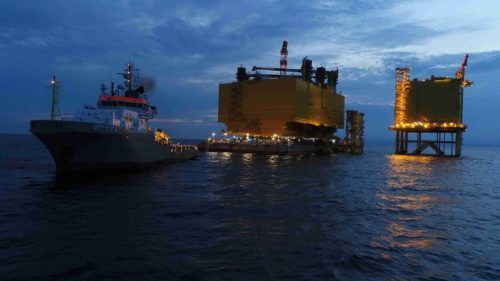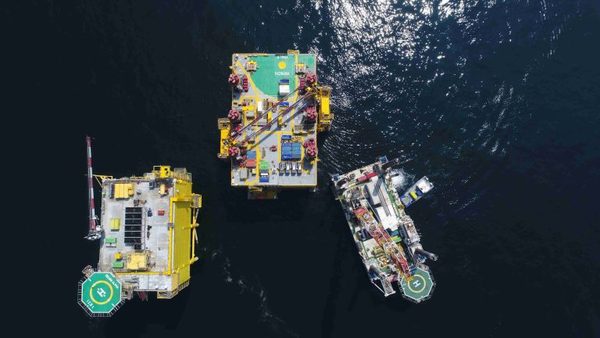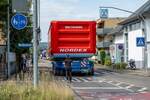News Release from GE Vernova
Wind Industry Profile of
Rock And Roll: A Massive AC/DC Converter The Size Of Arc De Triomphe Installed At Sea
From a dock in Warnemünde in Northeast Germany, the GE project manager watched as tugboats began the slow process of moving her biggest job out to sea: a yellow block the size of the Arc De Triomphe that will help connect offshore wind farms in the North Sea to the land.
The departure is one of the final chapters in this over $1 billion undertaking that a dedicated team in GE has been working on for the past four years. They, along with Stefan, are crucial players in a project that will help Germany reach its goal of generating 80 percent of its electricity from renewable sources by 2050.
The team will be spending the next several months working 14-day rotations of 12-hour shifts to “energize” the massive converter platform. Once operational, the platform will switch alternating current (AC) generated by the wind turbines to high-voltage direct current (HVDC) that will efficiently zip power to Germany. “For those of us involved in this project, this is the crowning achievement of our careers so far,” Stefan says.

In 2013, GE won a bid for the contract from Dutch-German electricity transmission operator TenneT to plan, construct and install the converter platform for the DolWin3 project. Besides the platform, DolWin3 also includes a new inland converter station in Dörpen/West and more than 100 miles of HVDC cables, a combination of subsea and land that will connect the two facilities.
Getting the converter to its permanent home was no small task. The team needed to be sure they had 72 hours of calm seas ahead before starting the journey. Tugboats — one pulling and two helping steer and brake — moved the converter station, which weighs around 18,000 tons, from the Baltic Sea dock westward along the Denmark coast and out into the German North Sea for six days. Once at the location, a special installation ship used hydraulics to lift the block onto a platform that sits on 18 pylons that have already been drilled into the sea floor — an operation that has little margin for error. Now installed, the converter sits 66 feet above the waves.

Crew members will spend the next several months working 14-day rotations of 12-hour shifts to energize the massive converter platform, which sits 66 feet above the waves (Image: GE Energy Connections)
When the platform goes into operation next year, the converter will harness power from as many as 180 wind turbines, including 66 GE Haliade 150-6MW wind turbines in the Merkur wind farm, in the North Sea. It will be sending sending 900 megawatts of power back to shore — enough to power about 1 million German homes. Inside the converter, electricity coming from wind turbines is first transformed from 155kv up to 350kv so it can travel in bulk efficiently to shore. Then, it’s converted from AC to HVDC. That electricity travels back to shore over two HVDC cables that are each about 5 inches in diameter until it reaches the Dörpen/West onshore converter station, where it will be converted back to AC. These “electrical super highways” lose less power than AC lines over long distances.
Wilfried Breuer, a member of the TenneT executive board, says that getting the offshore converter station installed successfully was “one of the biggest visible indicators of the German energy transition.”
As for Stefan, as challenging as her job is, she loves being part of the transition to more renewable energy. “This is one of the best jobs anyone could have,” she says.
- Source:
- GE Renewable Energy
- Author:
- Press Office
- Link:
- www.ge.com/...
- Keywords:
- GE, offshore, converter, North Sea, Germany, wind farm


























